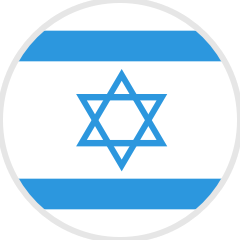Learning Habit Book
The Fluent Forever Book Changes
Update 11/10/2022: This is an older post written before we released our groundbreaking language learning app and our Live Coaching program.
Check out our products page to download the latest app version and sign up for Coaching!
Note: A more recent post on changes to the Fluent Forever book can be found here.
If something has changed since I wrote Fluent Forever, I’ll list it here:
- The Fluent Forever Difference: Recently, a tech journalist asked me whether Fluent Forever was any different from existing products like Duolingo or Rosetta. I decided to make a short video on the topic, both to explain some of the key differences between Fluent Forever and other tools out there and to talk about some of my goals with the upcoming app.
- A Revised Plan for How To Learn Japanese or Chinese: Japanese has been my pet project for nearly 2 years. Over the course of trial-and-erroring my way through the language, I now have a clear-cut plan for future learners of Japanese and Chinese.
- Using the Chinese Radical Decks for Language Learning: Back at the end of February, I posted my Japanese Radical Deck. That was meant to help Japanese students build a framework so that they could actually remember Japanese Kanji. We found someone who could modify our Japanese deck for Cantonese and Mandarin, and poof! We now have 3 new, fancy radical decks.
- On Hacking Fluent Forever To Learn Languages Faster: Today, I’m going to talk about the first major revision to the methods presented in Fluent Forever. I’ve been wanting to share this stuff for a long time, and it seems like today’s the day when I actually have the time to write about it. Yay!
- Kanji Signatures and the New Japanese Anki Model Deck: Today’s post is about a recent change I’ve made to my Japanese model deck to make my daily reviews a lot faster and more enjoyable. I’m quizzing myself on a new concept, which I’m calling “Kanji Signatures.”
- Japanese Tutorial Series: Hi everyone! I’ve been planning on blogging about Japanese for a long, long while, but I wanted to finish the Korean trainer beforehand, and Korean ended up taking 2–3x longer than expected. But! It’s finally done, so this month I’m going to be blogging a fair bit.
- Japanese Tutorial 1: How To Type in Japanese on a Mac: Our first entry is a quick tutorial on how to type in Japanese on a Mac, since we’ll need that working for all the other tutorials to make sense.
- Japanese Tutorial 2: A Stroke Order Anki Add-on: For our second Japanese tutorial, I want to show you how to install and customize a stroke order add-on for Anki called Kanji Colorizer. It’s basically a plugin for Anki that allows you to type in a word in Kanji in one field of your flashcards.
- Tutorial 3 – Anki Add-ons for Japanese Pronunciation: For our third Japanese tutorial, I want to show you how to install and customize two more add-ons for Anki that will help you look up Japanese pronunciation information for your flashcards.
- Japanese Tutorial 4: The Revised Japanese Model Deck: I’ve been messing around with my card models, trying to find a combination of flashcards that will let me remember Kanji without becoming boring or overwhelming. 3,800 flashcards later, I feel like I’ve landed on a card model that does the job fairly well. Now, I’d like to share my results with all of you so you can use them (and modify them to suit your own needs).
- The Japanese Radical Anki Deck: So I’ve begun learning Japanese and in this post, I want to share some of the fruits of my labors: a 320-card Anki deck that should give you the ability to actually remember Kanji characters.
- Verbling.com: This site was once a free language exchange website that basically let you try out speaking in the style of speed dating. As far as I can tell, they’ve since switched over to a paid video classroom model and gotten rid of the instant language exchange part. So I think we don’t currently have a speed-dating-language-exchange option; for now, you’ll have to get that through some of the other language exchange options.
- A correction to the book: On page 287, it says the tongue moves back on “oo.” On page 292, in the IPA vowel chart, it says the tongue moves forward. Both notes should say the tongue moves back.
- A reader mentioned a couple corrections to the French in chapter 1 of the book: “Grand-mère” or “grand-mères,” not “grandmères,” and “araignée,” not “araingnée`.”
- On page 104 of the Italian e-book, it says “fritelle” instead of “frittelle.”
- Lang-8.com: An exchange site where native speakers will correct your writing in exchange for you correcting theirs. It appears that as of Oct 10, 2019, they no longer allow for the creation of new accounts. One of our readers suggested LangCorrect as a possible alternative.
Find out how to really speed up your progress towards fluency with our comprehensive guide to the fastest way to learn a language.
[shareaholic app="share_buttons" id="28313910"]
















